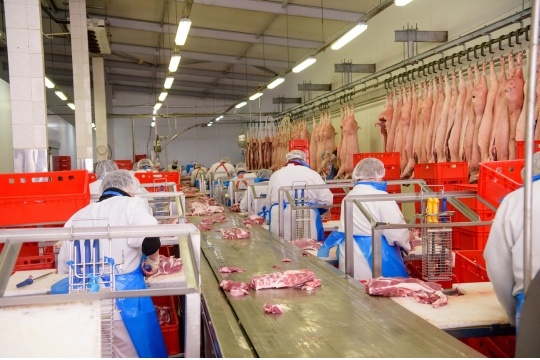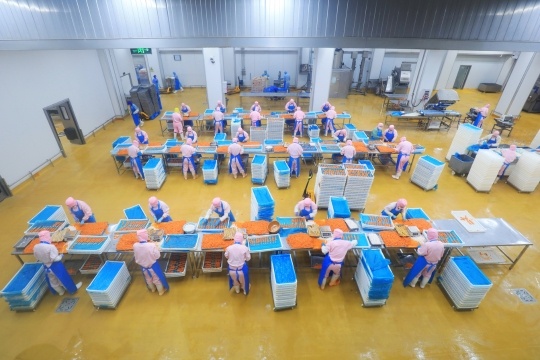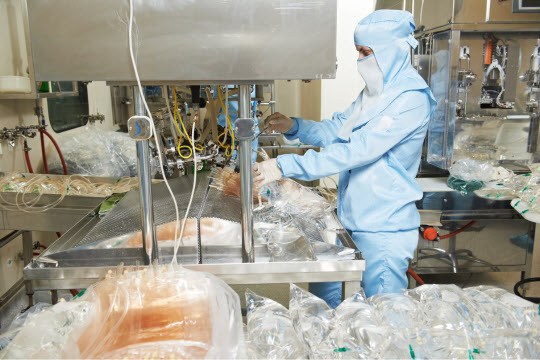
Combining AI and a Connected Workforce for Workplace Safety and Optimization
Empowering Connected Workers with Real-Time Risk Management
The Today of Safety and Productivity and what does it mean
The chemical, oil, and gas industries are crucial to the global economy but face unique challenges related to safety and productivity. Handling hazardous materials, operating in high-risk environments, and managing a large workforce make it essential to ensure employee safety while maintaining productivity. Traditionally, these industries have relied on manual data collection and analysis. However, with the advent of digital innovations and AI-driven solutions, there's a new path toward a safer and more productive future.
One significant challenge in these industries is ensuring compliance with safety regulations. Non-compliance can result in fines, legal actions, and reputational damage. Primary causes of non-compliance include outdated equipment, inadequate employee training, and insufficient safety protocols. These issues often lead to accidents and incidents that compromise employee safety and productivity.
Another major challenge is managing risk in real-time. Traditional risk management methods are often reactive, relying on incident reporting and investigation. By the time an incident is reported, the damage has already occurred. Proactive risk management, which is crucial for preventing accidents and incidents, requires real-time data collection and analysis—something difficult to achieve with traditional methods.
To address these challenges, companies can implement a Connected Worker platform and AI-driven solutions, or ideally, an AI-driven Connected Worker platform.
AI-Driven Solutions
Implementing AI-driven solutions can help address these challenges and guide companies towards a safer and more productive future. AI-powered technologies enable real-time data collection and analysis, providing meaningful and actionable insights across the organization. AI-driven predictive analytics can identify pain points and create a risk model to enhance company assets and safety strategies. This approach offers the connected workforce and management clear and simple universal access to validated data and context, improving decision-making capabilities.
SmartX HUB’s AI-driven solutions can help streamline operations and improve safety performance. With edge-to-enterprise visualization and intelligent data management powered by AI and machine learning, companies can identify anomalies and corrective actions in real-time, visualized on a single platform. These insights enable proactive risk management by conducting risk-based inspections based on threat likelihood and potential consequences. This approach allows for the proactive identification of hazards and the implementation of risk control measures.
The chemical, oil, and gas industries have seen promising results with the implementation of AI-driven solutions. Companies that have adopted these solutions have experienced significant improvements in safety and productivity metrics. For example, the implementation of AI-driven predictive maintenance has reduced downtime by up to 30% and increased productivity by up to 25%. Additionally, companies have reported up to a 50% reduction in safety incidents due to AI-driven safety solutions.
By enabling real-time data collection and analysis, companies can shift towards proactive risk management and preventive maintenance strategies. With the capability to identify risks in real-time and implement proactive measures, companies can ensure employee safety while maintaining productivity.

The critical importance of the Connected Worker
Empowering employees with intelligence and insights that provide transparency and visibility throughout the business is a crucial component of successful digital transformation. This is where the concept of the connected worker comes in.
The connected worker is central to the digital transformation strategy, focusing on equipping employees with the right information, tools, and technology to make better decisions and be more productive. By connecting workers to digital tools and platforms, they gain access to real-time data, analytics, and insights, enabling them to identify issues and opportunities, make informed decisions, and act quickly.
Connected workers use devices such as tablets, smartphones, wearables, and other connected devices to access critical data and communicate in real-time. This enhances efficiency, fosters effective collaboration, and keeps them informed of changing workplace conditions. Additionally, connected devices empower workers to identify potential safety hazards and take corrective action before problems arise, creating a safer and more secure work environment for both employees and the organization.
Ensuring the seamless flow of information between employees, management, and other stakeholders is essential for empowering workers to make the right decisions with the right data at the right time. By providing access to real-time data, analytics, and insights, workers can better understand the needs of the business and customers, and respond swiftly to changing conditions.
The value of AI-Connected Work
This brings the conversation back to data, highlighting its value as a catalyst for driving the adoption and capabilities of Industry 4.0. In an industrial setting, the value of data is evident across multiple touchpoints. Data connects the digital dots, providing insights that streamline processes and improve deliverables.
It translates into real-time insights that impact decision-making, enabling immediate response times and enhancing operational performance.
Most importantly, data can be leveraged to mitigate risk and increase the value of the connected worker in an increasingly challenging environment.AI-driven solutions can identify potential risks in real-time, trigger dynamic routines, and implement corrective and preventive actions to prevent accidents and incidents. This approach allows companies to streamline their operations, enhance safety performance, and maintain compliance with safety regulations. By leveraging technology, companies can empower their workers to actively participate in risk management, promoting a safer and more productive work environment.
In conclusion, the chemical, oil, and gas industries face unique challenges related to safety and productivity. However, by implementing a Connected Worker solution and AI-driven technologies that enable real-time interaction, optimize decision-making, identify risks, and implement corrective and preventive actions, companies can streamline operations, improve safety performance, and maintain productivity. With SmartX HUB’s innovative solution, companies can further streamline their operations, improve safety performance, and ensure compliance with safety regulations.


Realtime Dashboard with Connected Worker Solution
With Smartx HUB's connected safety solutions and data, you can review workers' risk exposure reports, analyze heat maps of hazardous incident locations, and track compliance trends over time. Unsure about the current calibration status of every critical asset in your operation? Smartx HUB provides real-time visibility into every connected device, enabling you to ensure the safety of your workers. With connected wearables that deliver data analytics for real-time compliance, you can be confident that you are not only compliant but also proactively improving the safety of your team.
Efficiently manage your workforce and trade partners using safety wearables, smart sensors, and a workforce management platform.
Combining for Workplace Safety and Optimization AI and a Connected Workforce for Workplace Safety and Optimization with Smartx HUB
Designed to align with the mandates of organizations within the sector, the platform transforms smartphones and wearables into a comprehensive operational and safety tool. It empowers workers with connected insights and information, which loops back to decision-makers, creating a holistic ecosystem of data and engagement.



